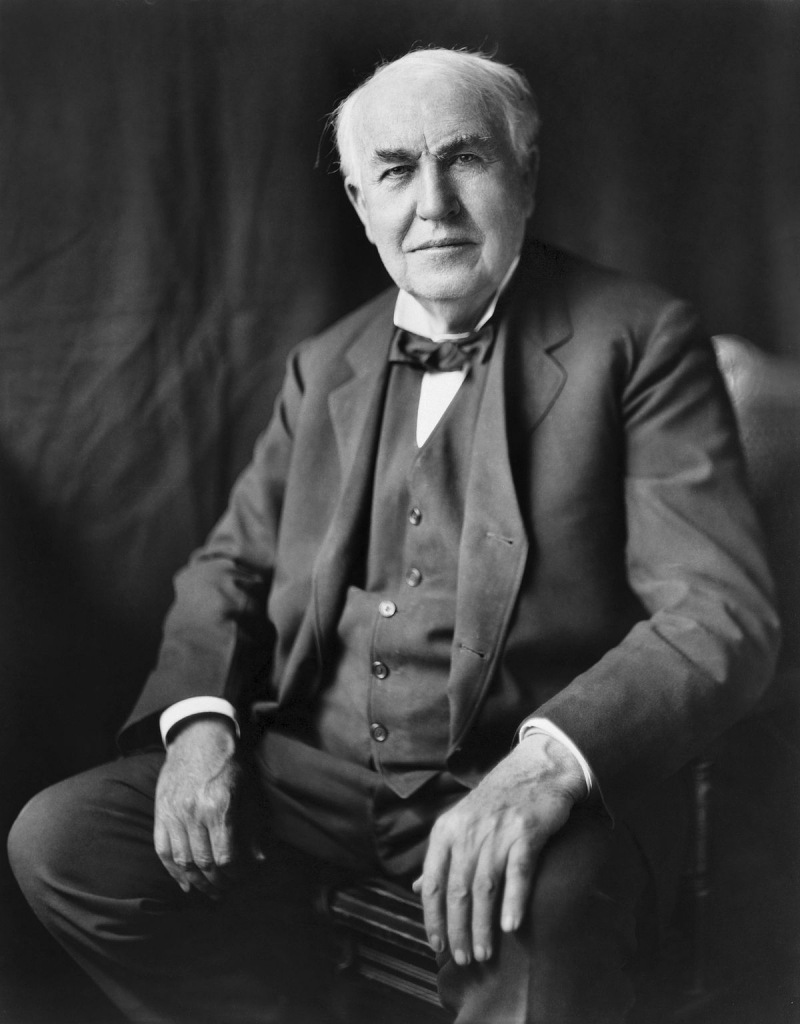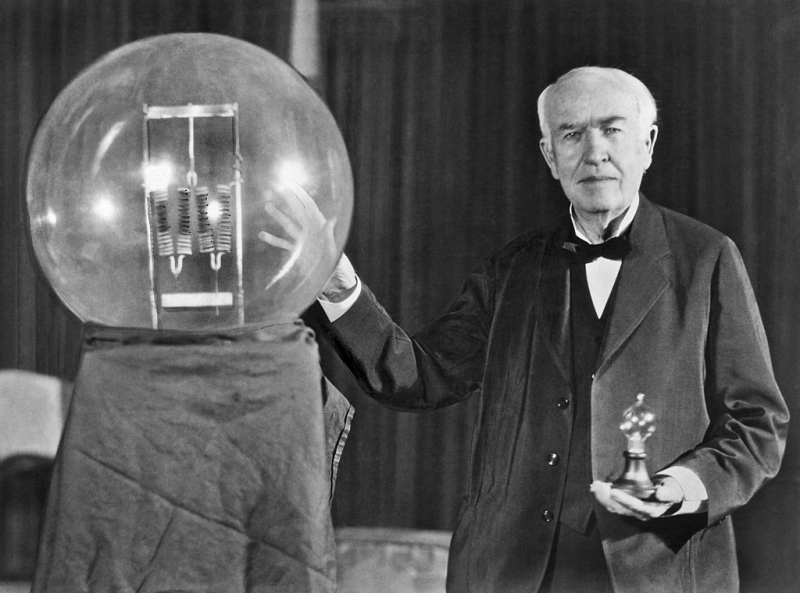Thomas Alva Edison
Thomas Edison was a businessman and inventor from the United States. He invented numerous inventions in disciplines as diverse as electric power generation, mass communication, sound recording, and motion pictures. These technologies, which included the phonograph, motion picture cameras, and early versions of the electric light bulb, had a significant impact on the modern industrialized world. Working with numerous researchers and staff, he was one of the first inventors to apply the ideas of organized science and cooperation to the process of invention. He was the first to establish an industrial research laboratory.
Edison was bred in the American Midwest and worked as a telegraph operator early in his career, which inspired some of his earlier inventions. In 1876, he opened his first laboratory in Menlo Park, New Jersey, where he created several of his early innovations. Later, he co-founded a botanical laboratory in Fort Myers, Florida, with businessmen Henry Ford and Harvey S. Firestone, as well as a laboratory in West Orange, New Jersey, which housed the world's first film studio, the Black Maria. Edison is regarded as the most prolific inventor in American history, holding 1,093 US patents as well as patents in other nations. Edison was married twice and has six children. He died of diabetic complications in 1931.
Thomas Edison was born in Milan, Ohio, in 1847, but grew up in Port Huron, Michigan, after his family relocated there in 1854. Edison's mother, a former schoolteacher, taught him reading, writing, and arithmetic. He just went to school for a few months. However, according to one biographer, he was a very curious boy who learned most things by reading on his own. He was captivated by technology as a child and spent hours at home conducting experiments.
Edison began his career as an inventor in Newark, New Jersey, with the automatic repeater and other improved telegraphic equipment, but it was the phonograph 1877 that made him famous. This achievement was so unexpected by the general public that it appeared nearly magical.
He began by attempting to create a long-lasting incandescent bulb, which would be required for indoor use. On October 21, 1879, Edison invented a commercially the viable electric light bulb and created an electric "utility" to compete with the existing gas light utilities. He formed the Edison Illuminating Company on December 17, 1880, and developed an energy distribution system during the 1880s. In 1882, the business launched the first investor-owned electric service at New York's Pearl Street Station. On September 4, 1882, Edison turned on the electrical power distribution system at his Pearl Street generating station, which provided 110 volts of direct current (DC) to 59 clients in lower Manhattan.
In 1876, Edison began working on improving the microphone for telephones by designing a carbon microphone, which consists of two metal plates separated by carbon granules that alter resistance with the pressure of sound waves. A constant direct current is carried between the plates via the granules, and the fluctuating resistance results in current modulation, resulting in a varying electric current that reproduces the varying pressure of the sound wave.
Thomas Edison began working on an electrical lighting system in 1878, hoping to compete with gas and oil-based lighting. He began by attempting to create a long-lasting incandescent bulb, which would be required for indoor use. On October 21, 1879, Edison invented a commercially the viable electric light bulb and created an electric "utility" to compete with the existing gas light utilities. He formed the Edison Illuminating Company on December 17, 1880, and developed an energy distribution system during the 1880s. In 1882, the business launched the first investor-owned electric service at New York's Pearl Street Station. On September 4, 1882, Edison turned on the electrical power distribution system at his Pearl Street generating station, which provided 110 volts of direct current (DC) to 59 clients in lower Manhattan.
Born: February 11, 1847( Milan, Ohio, U.S.)
Died: October 18, 1931(West Orange, New Jersey, U.S.)












